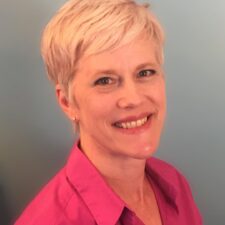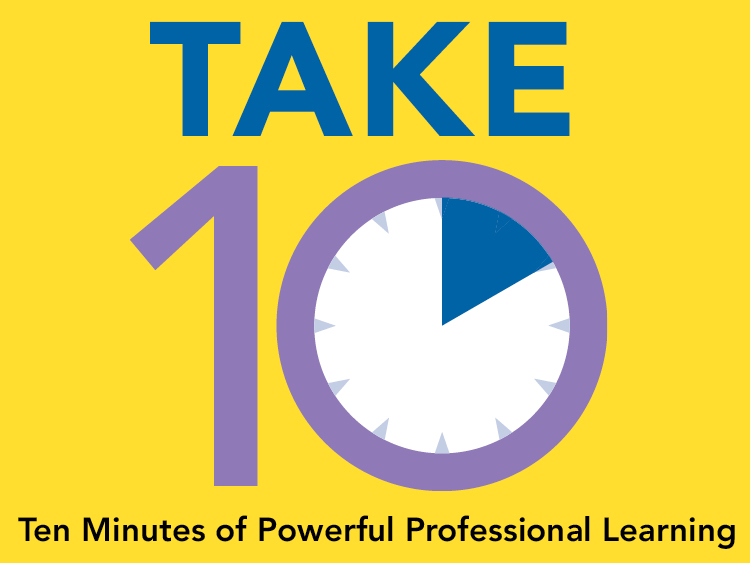This is the first in a year-long series of blogs about the Nature of Science and Culture in the Classroom. Be sure to read the second blog in the series from May.
We have just celebrated the birthday of Abraham Lincoln and the chosen birthday of Frederick Douglass and we are in the midst of Black History Month for 2021. In honor of Black History Month, I am inviting educators to begin a year-long journey of self-reflection with me. Along the way, we will explore the Nature of Science, the importance of culture in the classroom, and the vision underlying the Next Generation Science Standards. As always, the specialists at Mandell will have suggestions for further reading and shifts that you can make to create a more equitable experience for all learners.
While students of color make up 44% of school children in Connecticut, their teachers are overwhelmingly – more than 90% – white. The theme for Black History Month this year is Black Family: Representation, Identity, and Diversity. I would like to kick off our reflective year by considering how Black students might explore their representation, identity, and diversity of heritage in science classrooms that are led predominantly by white teachers.
For all of the ten years that I taught in New Haven high schools, I never considered this concern to be my educational responsibility. One of the reasons that I was drawn to science as a professional field is that I considered science one of the great equalizers of social inequities. Scientific accomplishment is supposed to be judged based on the ability of scientific reasoning and theories to explain natural phenomena. I worked to create a classroom where I had high expectations of all students, I provided opportunities for students to connect learning to examples from their own lives, and I wanted students to feel that their ideas were judged the way scientific ideas are judged, on whether they could be supported with evidence and reasoning. Had anyone asked me, I would have thought that my Black students were able to represent themselves fully in my classes and that they could explore their identity and diversity more appropriately in other classes with teachers who designed lessons in those areas.
Is my science classroom biased?
It turns out that although people all over the world engage in asking and answering scientific questions, there is a culture to how that is done. What counts as evidence and how reasoning is communicated in the US are captured in the language norms of STEM. These norms represent the experience of the dominant US culture of white, privileged, Western, men. Students from other backgrounds can struggle with these norms if their race, ethnicity, gender, or culture is not assigned any value in the science classroom. A classroom that has only these language norms has implicit bias against certain people.
Implicit bias embodies the judgments we make without even realizing we are making them. I was biased in thinking that the science norms of my classroom were color-blind. The only way to address implicit bias is to start by asking questions. That is why we started this series with a question. For the rest of this post, I’ll ask more questions to start our reflective journey together.
Do I have implicit bias?
We can ask about our own implicit biases with instruments like those at Harvard University’s Project Implicit. I took the assessment for race. Spoiler alert – I do have implicit bias. I’d like to argue about how the assessment was designed and reject the result. It conflicts with my identity as a good person. In her book, Coaching for Equity, Elena Aguilar cites work that this dichotomy – if I’m not a good person, I must be a bad person – stymies our ability to do hard work on ourselves. She suggests embracing the idea of being a “good-ish” person and committing to being good-ish as often as possible.
Now, there are questions that I never asked that I wish I would have asked in my classroom. Did my students feel like they belonged in my classroom? I always greeted them at the door as they arrived so that they would feel welcome. Being welcome isn’t the same as belonging. Did they feel that they were represented, that their core identities were valued, and that the diversity of their history was celebrated? Did the students want to be there? I know the answer for some was, no. I never asked them – why not?
Let’s ask them. I don’t have a classroom currently so I’d like to lean on you, my educator colleagues, to explore this work. There are many reasons why students do not want to attend class and many of these reasons are beyond our control. That’s not a reason not to ask. Ask students about their prior experiences in science class. Ask what is working well for them in their other classes and what isn’t. Gather this feedback in multiple ways – privately and anonymously, in whole class discussions, and from small, homogeneous groups. Ask frequently about what is working for them in your class. The more you ask, the more routine the conversation becomes, the more likely you are to uncover something you didn’t know.
How well do I understand my students of color?
When Michael Brown was killed by a police officer in Ferguson, Missouri, I taught a high school forensics class where the students at my school and in my classes were predominantly Black. I thought that having class discussions about the case was appropriate to the curriculum. I recently related this story to a colleague who asked, “Oh boy. How did that go?” “Fine,” was my response. People spoke. The discussions didn’t get heated or uncomfortable. What I didn’t consider was that my students were likely self-censoring or code switching. I use code switching here to mean not only switching between multiple languages in a conversation but in the broader sense that it can be used to refer to altering behavior, language, and other cultural markers to fit a dominant culture. My high school students were certainly savvy enough to calculate that having a racially-charged conversation with their white teacher could carry a lot of risk for them.
In my personal journey, I have come to understand that as a white person, I do not understand what it is like to be a Black person in the US. I am part of what the NGSS Diversity and Equity Team calls a “dominant” group, to indicate not the group’s numeric majority or minority, but its social prestige and institutionalized privilege. As such, I may not have been asking myself important questions about my culture and the culture of my students. I am working to learn more about what this means and I invite you to do this work with me. To start, EducationWeek has very recently compiled an extensive list of resources that educators can use to explore their relationship with race.
The rest of our Nature of Science and Culture in the Science Classroom series will come out every few months for the next year. During this time, we will ground our discussion in the Nature of Science understandings of Appendix H of the NGSS and consider specific strategies for equity for different groups of non-dominant students as outlined in NGSS Appendix D.
In the meanwhile, see our recent blog about celebrating Black STEM professionals and check out our Facebook page for weekly social media features of Black scientists and engineers all month long.
Join me!
This content was made possible in part by the Institute of Museum and Library Services.

Gail Mitchell Emilsson is a Professional Learning Specialist at the Connecticut Science Center’s Mandell Academy for Teachers. Previously, she worked in pharmaceutical research and as a high school science teacher in high need schools. Gail’s professional interests include supporting educators in creating meaningful and equitable science learning experiences. Gail joins the rest of the Mandell team in designing and providing immersive professional learning and coaching in districts.

